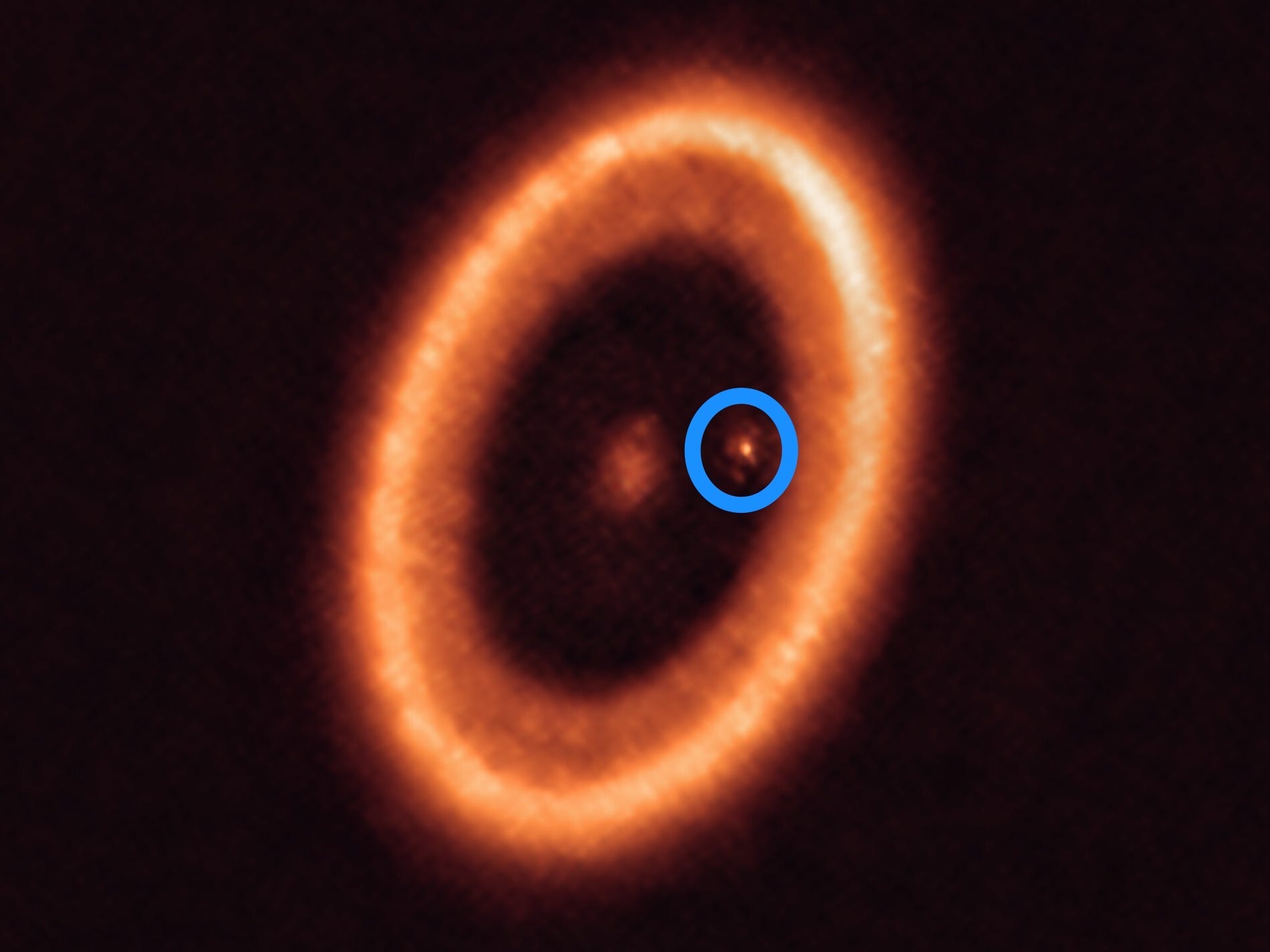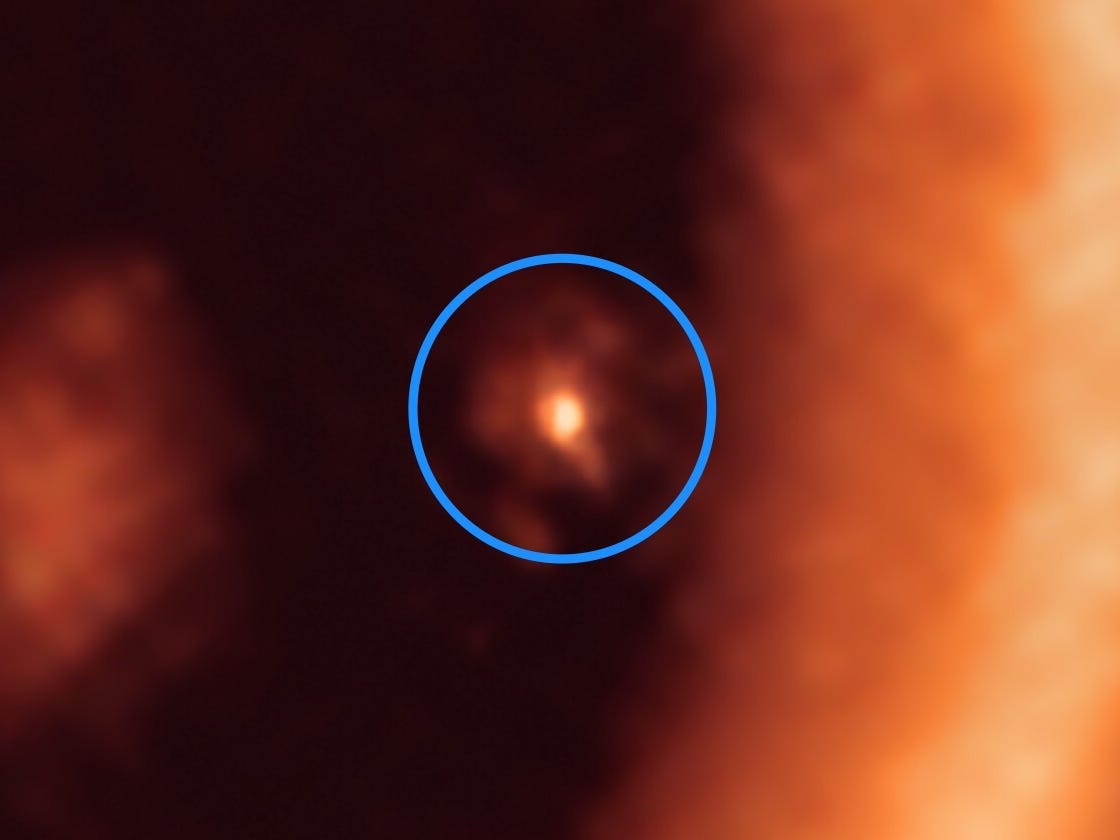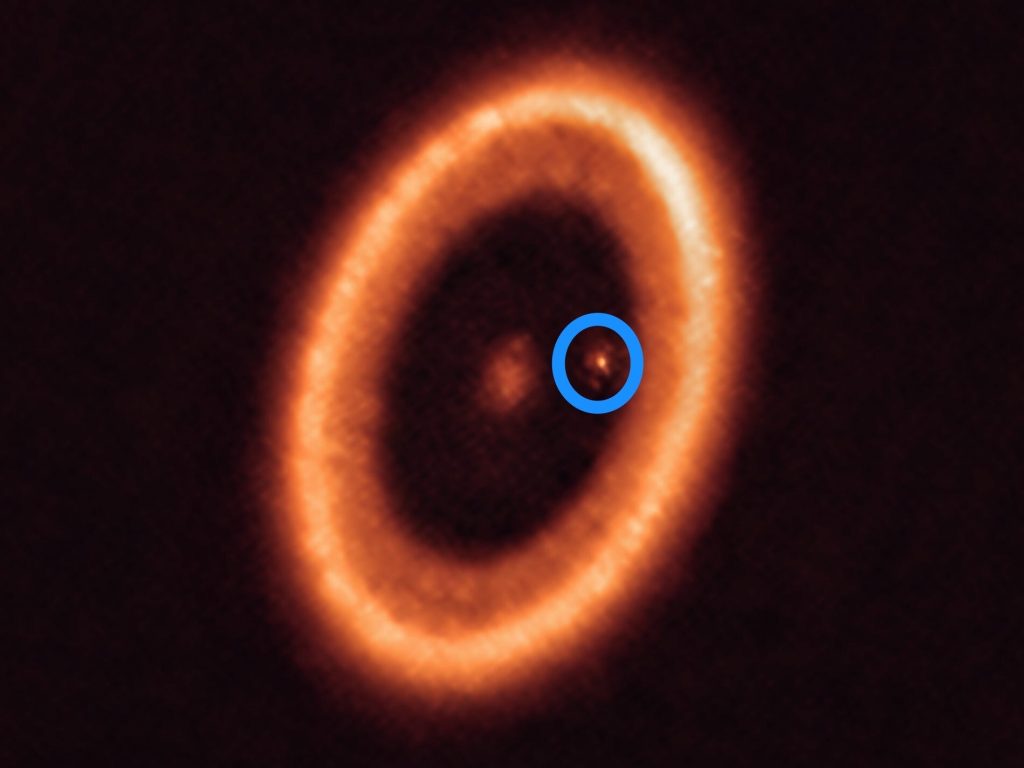
ALMA (ESO/NAOJ/NRAO)/Benisty et al.
- Astronomers have captured a distant planet adorned with a moon-making disc for the first time.
- The planet has captured enough gas and dust in its orbit to make three moons the size of Earth's.
- By studying this world and its star, astronomers can learn more about how planets and moons are born.
- See more stories on Insider's business page.
For the first time, astronomers have captured an alien moon in the making.
Two enormous Jupiter-like planets are orbiting a star about 400 light-years away – and one of them seems to be forming a moon. Researchers aimed the radio dishes of the Atacama Large Millimeter/submillimeter Array (ALMA) at the distant planetary system and captured a ring of material surrounding the planet.
That "disc" is exactly how astronomers think moons form. A planet's gravity captures surrounding dust and gas, then its rotation whips that material into a spinning disc. Over time, the dust and gas falls together into moons. Astronomers still don't fully understand how this process works, so they could learn a lot from studying this planet.
Similarly, the star itself has a disc – material that could one day coalesce into new planets.
"These new observations are also extremely important to prove theories of planet formation that could not be tested until now," Jaehan Bae, a researcher at the Earth and Planets Laboratory of the Carnegie Institution for Science, who co-authored the study, said in a press release.
The first image, above, shows the star at the center of the disc. The system is called PDS 70, and the planet with the moon disc is called PDS 70c.
The planet's moon-making halo, captured below, is about the width of the distance between Earth and the sun. That's about 500 times larger than Saturn's rings.

ALMA (ESO/NAOJ/NRAO)/Benisty et al.
The disc contains enough material to make three moons the size of our own moon, according to the astronomers, who published their research in The Astrophysical Journal Letters on Thursday.
"In short, it is still unclear when, where, and how planets and moons form," Stefano Facchini, a co-author of the study and research fellow at the European Southern Observatory, said in the release. "This system therefore offers us a unique opportunity to observe and study the processes of planet and satellite formation."
The other planet circling this star does not show signs of a disc. The researchers said this could indicate that the moon-disc planet gobbled up all the available material, starving its twin. In addition to forming moons, the disc is likely helping the planet grow larger as material slowly falls into it.
The researchers plan to look at this star and its disc-adorned planet more closely with the Extremely Large Telescope, still under construction in Chile's Atacama Desert. Once built, it will be the largest visible- and infrared-light telescope on Earth.

